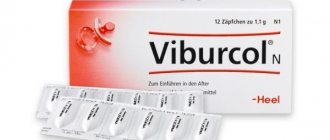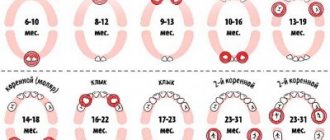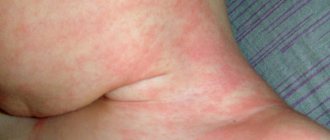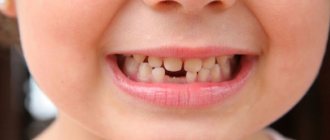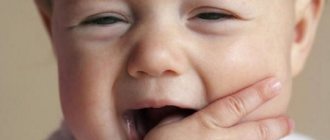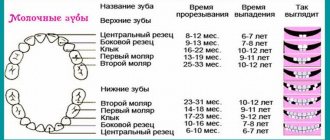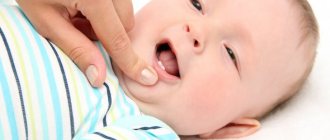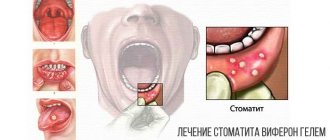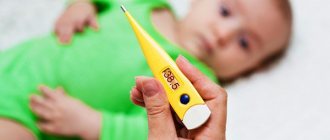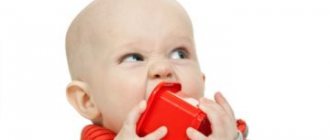Main symptoms of teething
Starting from 3-4 months, parents, on occasion, try to look into the baby’s mouth or “tap” with a spoon from time to time. How to understand that teeth are cutting? It happens that they erupt unnoticed by everyone, painlessly and calmly. But such cases are quite rare. Basically, teething is a rather hectic and exciting event in the lives of parents and children.
All symptoms may not appear at once. Some children may experience a slight increase in temperature, while others may experience anxiety and moodiness. Prominent ones are:
- profuse drooling;
- the desire of the little one to “scratch” the gums with everything that comes into the hand.
But all manifestations depend on the physiological characteristics of a particular child.
Some ailments are not related to teething. However, parents attribute them specifically to the appearance of teeth. How to determine which symptoms really indicate that the first teeth will soon appear, and which indicate completely different diseases?
Signs of teething
- The baby's gums turn red and swell in the place where the first baby tooth should appear.
- You can clearly see a white tooth under the thin skin on the gum.
- In some cases, body temperature rises to 37-38 degrees.
- The gums itch and ache. The baby begins to pull into his mouth everything that he can grab in his fist, as well as the fingers themselves.
- Salivation increases.
- The baby is reluctant to take the breast or refuses food altogether. This is caused by unpleasant sensations in the oral cavity.
- If the immune system is in a weakened state, then the baby’s ears begin to hurt and a runny nose appears. He often touches his face and grabs his head.
- The baby does not want to play, becomes whiny, restless and irritable.
- Night and daytime sleep is disturbed.
What symptoms are not related to the appearance of teeth?
Not all known manifestations in the form of fever, cough or diarrhea indicate teething. Many mothers and fathers, out of inexperience or ignorance, attribute some rather serious symptoms to the appearance of teeth.
Diarrhea, fever, cramps and body temperature above 38 degrees may indicate that there is some kind of concomitant disease. And if vomiting and lethargy in behavior are added to this, then do not delay calling a doctor at home.
Diarrhea and fever, excessive tearfulness are not, according to many experts, symptoms of teething. Perhaps this is an upset stomach or an infectious disease, because children put everything in their mouths. And adults sometimes don’t have time to keep track.
As a result, it is at this time that the mucous membrane in the mouth comes into most close contact with various infections, viruses and microorganisms. Try to do wet cleaning in the apartment more often and wash toys thoroughly.
| Main symptoms of teething | Rare or non-teething symptoms |
|
|
Also try to keep an eye on what might end up in your baby’s hands (and then in his mouth) in the next minute. Do not forget to periodically wash your face and hands, and monitor your child’s hygiene.
Difficult teething
Robert Burgari.
Homeopathic treatment of newborns and infants . Publishing house "Similia". Moscow. 2002
In some babies, starting from the moment the gums swell due to
teething, various rather painful
disorders. Pain in the gums is difficult to bear and causes agitation:
even the slightest pain causes the baby to cry; This
the initial reaction of crying is aggravated by increased
pain or feeling unwell. All this is poorly tolerated not only by the child, but also by him.
others, especially when the baby’s sleep is upset, which is often the case in such a situation. Some children experience reflex disorders at the level of the mucous membrane
nasopharynx. In many cases, coughing and nasal discharge appear, making you think about
dengenic etiology of these disorders, since no other reasons can explain them
appearance fails: there was no contact with patients, no hypothermia, no disturbance
hygiene rules in the family, etc. Therefore, this disease is called “dental bronchitis.” The same applies to the so-called “dental diarrhea”, when there are no other reasons for
digestive disorder. In all such cases, caution must be exercised. However, it can be reassuring
Is coughing a symptom of teething?
To understand whether it relates to the appearance of teeth or the reason is completely different, observe the frequency of coughing attacks and its manifestations. Especially young parents may well mistake the signs of a cold in their baby for the beginning of teething.
- Cough, runny nose and high temperature indicate a weakening of the protective functions of the child’s immune system. During this period, the baby’s body is most accessible to infections and viruses.
- A teething cough can be considered natural when irritation appears around the child’s mouth (on the chin and cheeks) in the form of a small rash when coughing. This indicates that phlegm comes out along with saliva. And the cough itself appears in the form of small attacks for just a few minutes.
- At night, it can last up to 5 minutes, since the child is in a horizontal position, and sputum accumulates in the bronchi.
- It happens that the development of a cough begins from drying out of the mucous membrane in the larynx with frequent crying. Usually the cough goes away after a few days, as soon as the baby feels better.
- If the baby shows signs such as shortness of breath, wheezing or a dry cough, and the attacks are prolonged, then most likely this is a concomitant cold.
What medications can be given to a baby for cough?
The most important thing to always remember is that self-medication is unacceptable. After all, an advanced disease can have complications and further worsen the baby’s well-being. Use certain medications only after consulting your doctor. Even if this is not your first child, still keep in mind that each person, especially a small one, has their own characteristics and individual reaction to any medications.
If the cough really concerns teething, then, first of all, all efforts should be directed to facilitating the process of teething. And short-term coughing attacks are an accompanying symptom.
- Cough during teething in infants does not require special treatment. At this age, the most important thing is the mother who is nearby, her affection and care. You will have to be patient and find ways to stop the baby from crying. Try to stop the onset of irritation or anxiety in a timely manner. Show imagination and resourcefulness to distract your baby from pain.
- You can really help your baby if you regularly clear mucus buildup from your baby's nose using a nasal aspirator or bulb.
- It is recommended to wash with a saline solution or drops based on sea water (“Aquamaris”). Do the procedure 3-4 times a day for severe runny nose and cough.
- Avoid using table salt, as recent research suggests it contains chemical additives that are used to maintain presentation and prevent stickiness. An alternative is Himalayan pink salt.
- Rinsing with chamomile will preserve the natural microflora in the baby’s nasopharyngeal mucosa and reduce swelling.
- Mucolytic agents that help thin sputum and remove it will not bring any results up to 3 years of age. Children under this age cannot expectorate mucus.
Paracetamol for toothache: does it help or not?
The main active ingredient of the drug blocks the production of prostaglandins, which normally signal the brain about “problems” in the body through a feeling of pain. But paracetamol is quickly destroyed in areas of inflammation by the enzyme peroxidase. Therefore, when taking the medicine, you can count on an analgesic effect, but not an anti-inflammatory effect.
Paracetamol temporarily relieves toothache, but does not treat its cause. You still have to go to the dentist.
You also need to consider the speed with which the medicine will act. Doctors recommend that adults take the drug 2 tablets, 30-40 minutes after meals, 3-4 times a day. Paracetamol does not damage the gastric mucosa and is absorbed fairly quickly by the intestinal walls, beginning to act within half an hour. And after 4 hours it is eliminated from the body.
As for other forms of medication, dentists do not recommend using syrups for adult patients, due to the fact that they contain a low concentration of the active substance and many auxiliary components. Rectal suppositories are also less effective, because paracetamol is less absorbed through the intestines and you will have to wait longer for results.
How to help your baby teething
Of course, every loving mother and all family members try to support the baby during these periods: mother carries her in her arms day and night, forgetting about fatigue, brothers and sisters share their favorite toys, and dad nervously and carefully strokes an arm or leg, afraid to disturb the baby again. .
But sometimes this is not enough, because physical discomfort exhausts the child in just a few days. What effective ways are there to relieve symptoms? Let's look at this issue in more detail.
The best teething remedies
During this period, I really want to relieve the child’s anxiety and pain. But, firstly, you need to go through this period and be patient, and, secondly, absolutely all remedies cannot completely remove pain and itching. They only bring temporary relief. You need to know this and be prepared not only to endure all the stages of teething yourself, but also to help your baby with all your might.
Modern medicine can provide a sufficient number of drugs to choose from that can alleviate the child’s condition and relieve pain for a while. They affect differently:
- Cool.
- Eliminate gum inflammation.
- They have a complex effect.
The drugs contain different components, they may have different modes of use, side effects and age restrictions. Must be used strictly according to instructions.
Main criteria when choosing a drug
- Components included in the product . You should read the ingredients carefully. Try to choose a product based on natural ingredients. Balance the characteristics of your child’s body and the components included in the drug.
- Type of drug . There are homeopathic ones, consisting only of natural ingredients. Basically, they are taken orally and tend to gradually accumulate in the body. There are topical preparations. They affect specific areas, places that have undergone an inflammatory process. They have an analgesic nature and can relieve inflammation.
- Form of the drug . It all depends on which one suits you best and is convenient to use. This can be a gel, suppositories, suspension or solution.
- Gels that cool . Most often used. They are especially effective in helping with swollen gums.
We offer the most effective drugs, which were selected according to surveys, the opinions of parents and specialists.
Pain relieving gels for teething
| Kalgel |
|
| Holisal |
|
| Dentinox |
|
| Dentol – baby 7.5% |
|
| Kamistad |
|
Kalgel
The product is effective, but it is recommended to use it only after the recommendation of a pediatrician. Due to the fact that the drug contains lidocaine hydrochloride, allergic reactions in the form of rash and itching, as well as anaphylactic shock, are possible. The drug is prohibited for children with renal failure, as it is excreted through the kidneys in the urine. Contraindicated for use in children with heart and stomach diseases (if intraventricular conduction is impaired).
Dosage regimen: interval of at least 20 minutes between doses, and no more than 6 times a day. Apply 7.5 mm of gel to the tip of a clean finger and gently rub into the inflamed and swollen area of the gum.
Holisal
In addition to the fact that the drug eliminates pain and fights germs and viruses in the oral cavity, it also relieves swelling. The advantage is its antipyretic effect, which begins quite quickly - after 2-3 minutes. Effectiveness from 2 to 8 hours.
Apply 0.5 cm of gel from the tube onto a clean finger and rub into the area of the inflamed gum. Some parents apply the product to the pacifier, which is strictly prohibited. The product is not absorbed properly by the gums, and when swallowed it enters the gastrointestinal tract.
Judging by the reviews, this drug helps a lot, although it is not recommended for children under 1 year of age. Lidocaine can cause allergies, so there is no need to self-medicate. Before use, be sure to consult your doctor.
Dentinox
Not only does it help get rid of aching pain and discomfort, but it is also a preventive measure: it prevents the appearance of swelling and inflammatory processes, and irritation in the oral cavity. It has a pleasant sweetish taste and is not immediately washed off with saliva.
Apply the gel after eating and before bed. There are no special contraindications, but at one time you can rub a very small amount into the inflamed area of the gum - no more than a pea.
Dentol baby, 7.5%
The drug does not contain dangerous lidocaine and can be used from the age of four months. Quickly relieves pain and inflammation. The main disadvantage is considered to be a short-term effect.
Good value for money. Apply to the fingertip in a layer of no more than 0.5-1 cm. Then carefully rub it first into the upper gum, then into the lower gum. The taste is pleasant because it contains cherry flavor and ascorbic acid.
Kamistad
The main ingredients included in the composition are lidocaine and chamomile extract. Use with caution in children under one year of age. Chamomile extract, as well as honey and mint flavoring, make the tan gel quite pleasant to the taste.
Apply the product to your finger or a cotton swab and rub into the gums. Can be used no more than 2-3 times a day. Recommended to use after meals and before bed.
Homeopathic remedies for teething
Some babies experience an allergic reaction when taking medications that contain lidocaine.
Many people have individual intolerance to certain components. In this case, it is better to use products based on natural ingredients. Homeopathic pain relievers for teething
| Dantinorm – baby |
|
| Viburkol |
|
| NatraBio |
|
| Pansoral “First teeth” |
|
| Dentokind |
|
Dantinorm baby
The drug is taken 2-3 times a day in between feedings for 3 days. If there is no improvement, consult a doctor. Can be combined with other medications. The only contraindication is individual intolerance to one of the components.
Convenient to use. Each ampoule is stored in a special package. The solution is used orally and is absolutely safe for children. After opening and use, discard the container immediately.
Viburkol
If the baby does not have a high temperature, then use 1 suppository 2 times a day. If the temperature is 37.5 - 38, then 1 candle at least 4 times a day, if the temperature is high, then 1 candle 6 times a day. When the temperature drops to normal, then for a few more days they give 1 suppository 2 times a day as a preventative measure.
The drug is very well known and popular, many people use it and the reviews are mostly positive. Its composition is unique and has no analogues. The advantage is that it not only removes inflammation and pain, but also fights high fever.
NatraBio
The product does not contain alcohol, is very convenient to use, with a soft pipette. The taste is pleasant, it is recommended to drop under the tongue every 20 minutes until the pain subsides. It is considered one of the best homeopathic remedies, as it contains only natural ingredients.
It has no side effects, does not cause lethargy or drowsiness. Used from 4 months. One dose – 0.5 ml. It does not contain sugar, the doses of components are precisely adjusted, which allows you to quickly relieve pain. Does not cause drowsiness, so can be used during the daytime.
Pansoral “First teeth”
An excellent drug with a unique composition that has a calming and softening effect. Can be used when the first baby teeth erupt. No contraindications have been identified.
Squeeze a small amount of gel onto a clean finger and apply light massage movements to the inflamed and swollen areas of the gums. The product is not suitable for infants, which is a disadvantage of the drug.
Dentokind
The pack contains 150 tablets, which are enough for a long period. The course of treatment is 5 days. For infants, the tablet is dissolved in water. You can take no more than 6 tablets per day with an interval of 2 hours. The drug consists only of natural ingredients that relieve pain and alleviate the general condition of the baby.
The disadvantages include the form of the product and mild pain relief. But the advantage is the reduction of salivation and antipyretic effect.
Conclusion
Parents need to understand that gels, solutions, suppositories are only auxiliary means when teethers, mother's breasts and everything else do not help. The baby is very capricious, sleeps poorly and has no appetite, but this does not mean that he needs to be fed medicines. Many drugs contain lidocaine, which, if used incorrectly, can cause anaphylactic shock, an allergic reaction and a rash.
Before use, be sure to visit a pediatric dentist or pediatrician for a consultation. Tell us in detail about the characteristics of the baby’s body, intolerance to components, if any. Feel free to ask questions.
Treatment regimen with Parlazin, Fenistil and Dantinorm
Each teething drop for infants has nuances of use. Let's look at how to take popular remedies for babies up to one year old.
Let's smile! My older brother's son went to first grade. He motivates him with various joys - toys, little things, and so on. And my father promised me in first grade that if I graduated from school with honors, he would allow me to insert a gold tooth, like Uncle Dima’s. The enthusiasm did not wane for many years.
Parlazine dosage
It is not recommended to use the drug before 6 months, and from this age, 5 drops (2.5 mg) once a day are prescribed; children from one to three years old are recommended to take 2.5 mg of the drug twice a day.
Parlazin teething drops should be given in individual dosages, depending on the age of the baby
Instructions for Fenistil
Antihistamine drops Fenistil are indicated in the following dosage: babies from 1 to 4 months, 3-5 drops, from 5 to 9 months, 5-10 drops, children from 9 months to one year, 9 to 12 drops once a day. In addition, the dosage of the drug depends on the weight of the baby (for more details, see the instructions for the drug or study the material here).
The photo shows Fenistil dental drops. They play the role of an antihistamine and are excellent for removing swelling from the gums.
We give Dantinorm baby
The course of treatment with this remedy is three days: on the first day, the capsule should be divided into three doses, and on subsequent days, reduce the dosage to two doses, while reducing the amount of medication. The drug should be dripped using a pipette under the baby’s tongue.
Dantinorm teething drops are inexpensive and effective
The instructions for each drug contain contraindications related to the hypersensitivity of the baby’s body to a separate component of the substance in the drops during teething. If you have an allergy, you need to choose another medicine that will be as safe as possible.
Which teether should you choose?
There are quite a lot of varieties. They vary in function, size, shape and material. Let's look at the main types.
- Cooling. This teether contains water or a safe gel inside. Keep the toy in the refrigerator for a while and then give it to your child. It will relieve swelling, inflammation, itching and pain.
- Silicone. Their surface is ribbed and there may be villi. The teether is put on the finger of an adult. It is better that this procedure is done by everyone - the mother. Used to massage gums and relieve itching and pain.
- Teether rattle. Has various forms. Often consists of several components. In addition to alleviating the painful condition, it also develops the child’s fine motor skills.
- Vibrating teether. Battery operated. Begins to move at the slightest contact with the child’s oral cavity.
- Teether pacifier. It looks like a regular pacifier and is made of dense material. Some models are filled with water or gel. It is quite appropriate to take such a pacifier with you into the fresh air when you go for a walk with your baby.
- Teether book. With special corners that can withstand the baby's bite force. Indispensable during the eruption of the first teeth. Not only a useful thing, but also an interesting toy.
Materials for teethers
This is not only silicone or soft, but elastic rubber. There are also wooden rodents. Each parent can purchase several types and then choose the one that really suits the baby.
- Silicone has a number of advantages. It has no taste or smell. Easy to clean and sterilize. Does not deteriorate, very stable and dense material.
- Wood. For those who love everything natural. Environmentally friendly material and will last a long time. The only negative is that it can sometimes be too hard.
- Products made from latex or rubber are very flexible and soft. Suitable for periods when gum inflammation and swelling are especially pronounced.
Choosing a teether based on age
When choosing a suitable teether, consider the order in which teeth appear. If the upper or lower front teeth appear, then the most ordinary models are quite suitable, preferably with slots for the baby’s hand.
If incisors or premolars are erupting, a slightly oblong shape is more suitable. You can also choose medium hardness. And when the first molars come in, it is advisable to purchase a teether with fabric pads that can absorb saliva.
Requirements for teethers
- Regardless of the child’s age and the teeth he has, absolutely all teethers should be thoroughly washed and sterilized, since they come into direct contact with the baby’s oral mucosa. Wash these toys regularly. Store them in a separate container in a clean condition.
- Please inspect the toy carefully before purchasing. There should be no sharp corners or small parts on it. The child may swallow or injure the gums.
- Lightweight and comfortable teethers are the most valued. A prerequisite is that it must fit in the child’s hand. Choose a toy according to the baby's age. The smaller the babies, the more interesting the teether, the richer the colors and the larger the details. If possible, purchase not one, but several pieces, and change them periodically.
- There are many manufacturers of similar products in the world. But the most popular and have won the trust of customers are: Avent, Tommee Tippee, Nuby, Vulli, Nuk, Canpol, Happy baby and Doctor Brown's.
What is the timing of teething?
All children are very individual, and such an important moment as the appearance of the first tooth can occur in each family at different times. At what month do teeth start coming in? Approximately, from 6 months to 3 years, a child’s baby teeth appear.
- Don’t be surprised if suddenly, at 3 or 4 months, your baby’s first tooth appears, or, conversely, only at one year old you notice that your baby puts everything in his mouth and sleeps poorly at night. Every little person has their own period. But, of course, if at 1 year or 1.5 years there is not a single tooth, and, moreover, nothing predicts its appearance, then you should consult a doctor. If the baby’s nails, skin and hair are in order, then most likely the pediatrician will refer you to a pediatric dentist.
- Not all babies exhibit severe teething symptoms. Sometimes they can be quite minor and short-lived: the baby is unwell for just a day or two. The child may be fussy or have difficulty sleeping.
- But moodiness and an increase in temperature may not occur, so you should not immediately prepare for the worst. For the same reason, every mother needs to be aware of the timing in order to be there to support the baby when teeth appear.
- For the majority of children, their first teeth appear at 6-8 months of age. By 10 months there should already be 4 front teeth: 2 lower incisors and 2 upper ones. Cutting through the upper ones is also very painful. From now on, you can give your baby a piece of apple or baby cookies. The baby will happily gnaw on “adult” food.
- Sometimes several teeth erupt on top, but the bottom still doesn’t come together. If the doctor does not find any deviations, then the baby will soon catch up with the schedule. You may need to add calcium to your diet.
- The upper lateral incisors appear by 13–14 months, some appear at 1 year. And by 15-16 months, the lower lateral incisors will already have arrived. At the same time, molars appear.
- Be careful from this moment on, as the baby not only bites off food, but also tries to crush it little by little with his teeth. Feed even dense pieces of fruit with caution. A child can take a bite and, after trying to chew, swallow a rather large piece of the same apple or crust of bread.
- By 15-17 months, the most difficult eruption of fangs occurs. This stage is often the most painful and painful.
- At less than 2 years of age (20 months), according to statistics, a child should already have 20 teeth.
The timing of teething can be influenced by many factors: the quality of breast milk, water and climatic conditions. And additional factors can also leave their mark:
- Heredity.
- The state of the child's immunity.
- Parameters of general development, in particular physical, whether he was born at term or seven months, whether there were birth injuries and illnesses in infancy.
Only all indicators as a whole will help to create a complete picture.
Timing of teething
| First (medial) lower incisors | 6 – 9 months |
| Second (lateral) lower incisors | 9 – 12 months |
| First (medial) upper incisors | 7 – 10 months |
| Second (lateral) upper incisors | 9 – 12 months |
| First upper molars | 12 – 18 months |
| First lower molars | 13 – 19 months |
| Upper canines | 16 – 20 months |
| Lower canines | 17 – 22 months |
| Second lower molars | 20 – 33 months |
| Second upper molars | 24 – 36 months |
Time tables in various sources are presented in different versions. This teething chart will help you understand the order, but is only a guide. If the baby has slight discrepancies, then it’s okay.
In some cases, not a single tooth appears for a long time. But then several begin to climb at once. Of course, during such periods it is especially difficult for a child. Prepare in advance for this scenario. You will need maximum patience and attention.
Approximate timing and order of teething
Each baby is individual, so the dates presented in the table are approximate. Average statistical data does not indicate any deviations if a particular child’s teeth began to erupt earlier or later.
Symmetry is considered an important aspect. Teeth should erupt in twos, no more than 2 weeks apart.
| Name of teeth | Child's age (months) |
| Lower central incisors | 6 — 9 |
| Lower lateral incisors | 7 — 10 |
| Upper central incisors | 8 — 10 |
| Upper lateral incisors | 9 — 12 |
| First lower molars | 12 — 18 |
| First upper molars | 14 — 19 |
| Lower canines | 16 — 22 |
| Upper canines | 18 — 20 |
| Second lower molars | 20 — 31 |
| Upper second molars | 24 — 30 |
Often baby teeth grow in the wrong order, but this is not always a pathology. A disorder in the order in which teeth appear may indicate that one of them is missing.
To exclude pathology, the child should be shown to the dentist every 3 months from the moment the first tooth erupts.
It used to be believed that late teething was a sign of rickets, but this is not true.
Delayed teething occurs among a huge number of healthy children. It is caused by genetic factors.
You will learn more about teething in the video.
Increase in temperature during teething: what to do?
Many pediatricians point out that a baby’s teething temperature of up to 37.5 – 38 degrees is understandable and acceptable. The reason is a weakening of the immune system due to the accumulation of microorganisms and bacteria in the oral cavity at the stage when the tooth passes through the bone tissue and is about to erupt.
The child's cheeks turn red, his eyes shine, and he becomes moody and tearful. Sleep and appetite may be disrupted. This condition can last from 1 to 3 days. Whether or not to lower the baby’s temperature is up to the parents to decide. But medical professionals do not advise doing this. After all, this is how the body fights and defends itself.
It's another matter when the temperature rises to 38.5 and above. Moreover, it doesn’t last for 3 days, but for a longer period. If the child sleeps much more, does not want to eat anything, is lethargic and apathetic, then it is worth taking action. Often additional symptoms include convulsions, heavy breathing and fever, and vomiting. You definitely need to call a doctor. Self-medication is strictly prohibited, since you do not know for sure what caused such a reaction in the body, and children cannot explain what hurts them.
What should parents do?
- Place a cotton cloth under your head while sleeping so that you can quickly replace it if it gets wet.
- Wear a bib and regularly wipe the child's face with a damp cloth.
- Be there, support, show care and love.
- Measure the temperature hourly and give plenty of warm water.
- When the temperature is within normal limits, use gels and teethers.
If you decide to use an antipyretic drug, here are some drugs:
| Nurofen |
|
| Efferalgan (paracetamol) |
|
| Ibuprofen |
|
Signs of teething in children
Teething symptoms in infants may vary and vary in intensity. It depends on individual characteristics, the immune system, and the type of teeth that appear. Thus, chewing teeth, popularly called “grandmothers,” often appear painfully, with an elevated temperature. The first teeth may erupt almost imperceptibly.
Signs of teething:
- swelling and soreness of the gums;
- increased salivation;
- the baby's desire to put his hands and objects in his mouth to scratch his gums;
- fever, runny nose, change in stool;
- drowsiness, lethargy;
- tearfulness, poor sleep.
Due to constant increased salivation, red spots and pimples may appear on the chin and around the mouth. A white dot or hematoma may appear on the gum.
Tips for parents
- Don't listen to the advice of grandmothers, aunts, neighbors. You cannot insert your fingers into the child’s mouth and press on the gums so that the tooth emerges faster. No matter how hard you try, you cannot speed up the process of tooth emergence.
- If the baby demands or reaches out for something that he absolutely cannot, then distract him and switch his attention. Hard, brittle foods (cookies, carrots, or hard-crusted bread) can cause pain to swollen gums. A child may also bite off a large piece and choke on it.
- First of all, when rushing to fulfill every child’s wish, remember that your main task is to help, not harm. If the item is prohibited, then find a way not to give it, but at the same time not upset the baby again.
